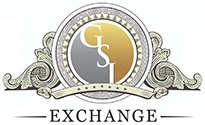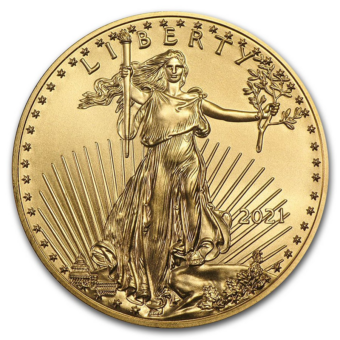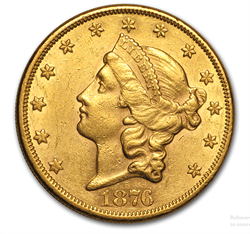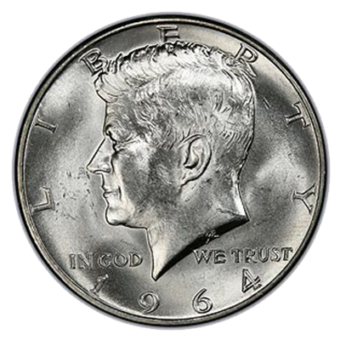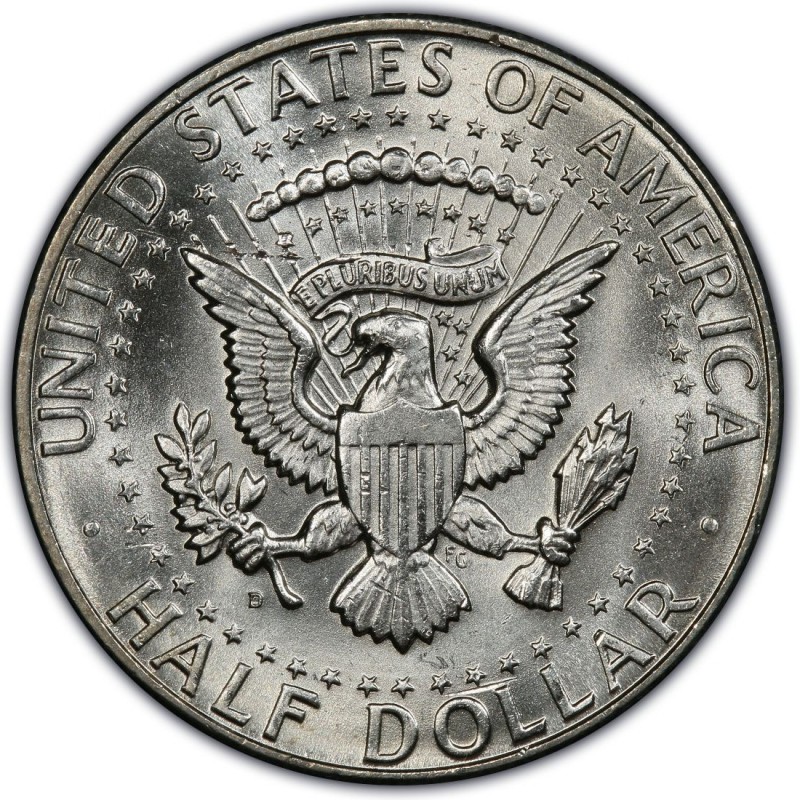Monday - 11.03.25: Gold inched higher and silver eased slightly by midday Monday as traders paused after recent volatility, awaiting new catalysts. December gold rose $13.20 to $4,010.40, while silver slipped $0.11 to $48.06. In other news, China scrapped a long-standing tax incentive allowing retailers to offset value-added taxes on gold sales—a move expected to boost revenue but raise consumer costs.
Tuesday - 11.04.25: Gold and silver fell in midday U.S. trading Tuesday as a stronger dollar hit a six-month high, pressuring metals despite global stock selloffs and rising risk aversion. December gold dropped $37.20 to $3,976.10, and silver slipped $0.57 to $47.50. Analysts warned equity valuations remain stretched, with Wall Street CEOs predicting a possible 10% correction within a year. Meanwhile, Brazilian police destroyed hundreds of illegal gold-mining dredges in a major Amazon crackdown, and Washington’s budget standoff neared a record-long shutdown, though lawmakers hinted a deal could come by week’s end.
Wednesday - 11.05.25: Gold edged higher and silver held steady in early U.S. trading Wednesday as investors sought modest safe-haven exposure amid lingering concerns over overvalued equities and a potential AI stock bubble. December gold rose $12.70 to $3,972.90, while December silver slipped $0.01 to $47.29. The ongoing U.S. government shutdown—now in its 36th day and the longest in history—continues to weigh on growth, while markets await the ADP jobs report for clues on potential Fed policy shifts. Democrats scored notable election victories across several key states, signaling voter focus on cost-of-living and economic issues.
Thursday - 11.06.25: Gold and silver slipped after giving up early gains, pressured by broad selling across commodity markets. A steep decline in U.S. stocks has yet to lift safe-haven demand, while a weaker dollar and lower Treasury yields offered little support. December gold last traded down $6.10 at $3,986.30, and December silver fell $0.38 to $47.64.
Friday - 11.07.25: Gold and silver prices rose early Friday, helped by a softer U.S. dollar and firmer crude oil. December gold gained $13.10 to $4,004.40, while December silver added $0.50 to $48.45. Traders are watching U.S. stock indexes, which look set to open lower after mixed global sessions; deeper equity weakness could boost safe-haven demand. Meanwhile, India’s gold ETFs are on track for record inflows this year—nearly $3 billion, or 26 tons—almost matching the total value of purchases from 2020 to 2024, according to the World Gold Council.
Is Gold in a Bubble or Breaking Out? Jim O’Neill Sees a Case for Both
The big picture
Gold is hovering near $4,000 an ounce after retreating from record highs above $4,360, leaving investors split over whether it’s pausing or peaking.
Former UK Treasury minister and ex-Goldman Sachs Asset Management chair Jim O’Neill argues that the metal’s surge carries both bubble-like momentum and long-term structural support. His commentary for Project Syndicate frames gold’s rally as a test of faith in central-bank policy and the U.S. dollar’s global dominance.
Driving the news
O’Neill points to retail investment demand as the engine of gold’s “parabolic move” from August to October, fueled by FOMO and self-reinforcing momentum—hallmarks of speculative bubbles.
He cautions that fundamentals may not justify the speed of the ascent: inflation remains stubborn but not accelerating, with September’s CPI holding at 3% year-over-year despite the ongoing government shutdown.
Gold’s upswing, he notes, continued even after the dollar weakened and bond yields fell, suggesting sentiment rather than data may be driving prices.
Still, O’Neill acknowledges a powerful bull case: gold’s appeal as an alternative reserve asset for countries seeking distance from the U.S. dollar—especially within the BRICS bloc he once named.
By the numbers
- $4,360 / oz — record high in October 2025.
- $4,000 / oz — current trading range.
- 3% — headline and core CPI in September.
- 71% — market-implied odds of a December Fed rate cut (CME FedWatch).
Why it matters
Gold’s rise embodies a clash between fundamentals and geopolitics.
If inflation and rates stabilize, O’Neill warns, the market’s euphoria could unwind quickly. Yet the global de-dollarization trend—led by China, Russia, and new BRICS members—provides enduring support for gold as a reserve diversifier.
The debate underscores how the metal now straddles two narratives: inflation hedge and monetary rebellion.
What to watch
- Whether renewed Fed hawkishness caps gold’s upside through stronger real yields.
- Any coordinated BRICS or central-bank gold purchases that tighten physical supply.
- Signs of retail-investor fatigue after months of FOMO-driven inflows.
- Inflation expectations holding near or above 3%, which could keep real rates negative.
The bottom line
Jim O’Neill’s dual-track view captures the uncertainty gripping gold’s spectacular run: part bubble, part realignment.
The metal’s next $300 move—up or down—will reveal whether investor faith in “insurance assets” outweighs the pull of profit-taking in a world still redefining its monetary anchors.
Democrats Sweep Key Elections as Voters Signal Rejection of Trump
The big picture
Democrats scored major victories across the East Coast on Tuesday, winning races that spanned the party’s ideological divide and signaling voter frustration with President Trump nearly a year into his second term.
From moderates like Abigail Spanberger in Virginia and Mikie Sherrill in New Jersey to progressive Zohran Mamdani in New York City, the results reflected a broad-based backlash against Trump’s influence as affordability and cost-of-living dominated campaign messaging.
Driving the news
Spanberger, a former CIA officer, won the Virginia governorship in historic fashion, becoming the state’s first female governor and delivering the party’s strongest statewide performance in years.
Her victory helped lift down-ballot Democrats, including Attorney General candidate Jay Jones, who survived a late scandal to unseat the GOP incumbent.
In New Jersey, Sherrill defeated Republican Jack Ciattarelli, overcoming Trump’s endorsement of her rival by winning large margins among Latino, Black, and independent voters.
In New York, Zohran Mamdani, a democratic socialist, defeated Andrew Cuomo for the second time this year—cementing a dramatic political reversal for the former governor and underscoring divisions between Trump’s populism and urban progressivism.
California voters approved Proposition 50, a redistricting measure backed by Gov. Gavin Newsom, giving Democrats five additional favorable congressional districts ahead of next year’s midterms.
Democrats also held their Pennsylvania Supreme Court majority, a key advantage in a state central to future election litigation.
By the numbers
- 5: new congressional districts Democrats gain under California’s Proposition 50.
• 64%: Spanberger’s share of the vote in Virginia’s Loudoun County.
• 64%: share of Latino voters won by Mikie Sherrill in New Jersey.
• $108 million: funds raised by Gov. Newsom to back the redistricting measure.
• 4: major Democratic statewide victories — Virginia, New Jersey, New York, and California.
Why it matters
The results highlight a clear anti-Trump sentiment among suburban, moderate, and urban voters, even as Democrats continue to debate their ideological direction heading into 2028.
While the party’s coalition remains diverse—ranging from centrists like Spanberger to progressives like Mamdani—nearly every winning campaign focused on economic affordability and frustration with Trump’s leadership style.
The sweep also strengthens Democrats’ strategic position ahead of next year’s congressional and gubernatorial races.
What to watch
- Whether Democrats can maintain unity as 2028 presidential jockeying begins.
• GOP recalibration efforts following losses in swing and suburban states.
• The legal and electoral fallout from California’s redistricting overhaul.
• How Trump responds to a new wave of intraparty dissent amid his weakened approval ratings.
The bottom line
Democrats’ coast-to-coast wins mark their most significant resurgence since 2024, showing voters’ discontent with Trump-era politics and rising living costs.
The challenge now is whether the party can convert electoral momentum into long-term unity—before internal divisions resurface ahead of 2028.
Tarriff Showdown with the Supreme Court
The big picture
The Supreme Court signaled it may soon narrow presidential power over trade, threatening to undo many of the tariffs imposed under former President Trump.
In a landmark hearing, several conservative justices questioned whether the White House can levy sweeping tariffs under emergency authority—potentially reshaping how presidents use trade policy to pursue economic or geopolitical goals.
Driving the news
The Court heard arguments challenging Trump-era tariffs, including the “Liberation Day” levies and duties targeting Canada, Mexico, and China.
Chief Justice John Roberts and Justice Amy Coney Barrett—seen as pivotal swing votes—appeared skeptical that presidents can impose such broad tariffs without explicit congressional approval.
A federal appeals court had already ruled the measures violated the “major questions doctrine,” the same legal reasoning used to strike down parts of Biden’s executive agenda.
Roberts noted that Trump’s claim to “a power to impose tariffs on any product, from any country, for any amount, for any length of time” appeared to grant “major authority,” hinting the Court may rein in executive discretion.
Still, oral arguments offered no guarantees; justices pressed both sides sharply on the limits of statutory power.
By the numbers
- 27%: market-implied odds that the Supreme Court upholds the tariffs (Polymarket, 4 p.m. ET).
• 40%: odds before the hearing began.
• 3: major trade partners affected — Canada, Mexico, and China.
• August 2025: month the federal appeals court struck down Trump’s tariffs.
Why it matters
A ruling against the administration could redefine presidential trade authority, stripping future presidents of a key economic tool.
For corporate America, especially import-heavy industries, tariff removal could ease supply-chain costs and lift profit margins. But for Trump’s broader policy platform, it would mark a major judicial rebuke of executive overreach.
If the Court sides with the lower court, tariff policy would likely shift back to Congress, curbing unilateral trade moves.
What to watch
- Whether Roberts and Barrett join a 6–3 conservative majority or forge a narrower ruling limiting, not overturning, the tariffs.
• How markets and manufacturers react to potential tariff rollbacks.
• Possible congressional efforts to reclaim trade powers in response.
• Political fallout heading into 2026 as tariffs remain a populist rallying issue.
The bottom line
The justices appear poised to clip the White House’s wings on trade authority.
If they do, it would end years of expansive tariff powers claimed under the banner of national emergency—and mark a decisive shift in how economic power is divided between Congress and the presidency.
NEXT WEEK’S KEY EVENTS
Economic Calendar: November 10 – 14, 2025 (ET)
MONDAY, Nov 10
• None scheduled
TUESDAY, Nov 11
• Veterans Day holiday, bond market closed
WEDNESDAY, Nov 12
• 10:00 am — Philadelphia Fed President Anna Paulson speaks
• 12:15 pm — Atlanta Fed President Raphael Bostic speaks
• 4:00 pm — Boston Fed President Susan Collins speaks
THURSDAY, Nov 13
• 8:30 am — Initial Jobless Claims (Nov. 8)
• 8:30 am — Consumer Price Index (Oct.)
• 9:20 am — New York Fed President John Williams speaks
• 12:15 pm — St. Louis Fed President Alberto Musalem speaks
• 12:20 pm — Cleveland Fed President Beth Hammack speaks
• 3:20 pm — Atlanta Fed President Raphael Bostic speaks
FRIDAY, Nov 14
• 8:30 am — U.S. Retail Sales (Oct.)
• 8:30 am — Producer Price Index (Oct.)
• 10:05 am — Kansas City Fed President Jeff Schmid speaks
• 2:30 pm — Dallas Fed President Lorie Logan speaks
Subject to delay due to government shutdown
NA = Not available due to government shutdown
IMPACT ON PRECIOUS METALS MARKETS
Initial Jobless Claims (Thu, 8:30 am ET)
• Rising claims → labor cooling; bullish for gold/silver.
• Falling claims → supports higher-for-longer rates; bearish for metals.
Subject to delay.
Consumer Price Index (Thu, 8:30 am ET)
• Hot headline/core CPI or sticky services inflation → real yields/dollar up; bearish for metals.
• Softer CPI (cooling core/services, lower inflation expectations) → easing hopes; bullish for metals.
Subject to delay.
U.S. Retail Sales (Fri, 8:30 am ET)
• Strong headline/control-group sales → growth resilience, supports dollar/yields; bearish for metals.
• Weak sales/negative control-group → demand slowdown, risk-off tilt; bullish for gold/silver.
Subject to delay.
Producer Price Index (Fri, 8:30 am ET)
• Firm PPI/final-demand and core → upstream price pressure, real yields supported; bearish for metals.
• Soft PPI/declining core → disinflation signal, easier policy path; bullish for metals.
Subject to delay.
Federal Reserve Speakers (Nov 12–14)
• Hawkish or “higher-for-longer” tone (Williams, Bostic, Musalem, Hammack, Paulson, Collins, Schmid, Logan) → reinforces real-yield and dollar strength; bearish for metals.
• Dovish or growth-risk emphasis → boosts easing expectations; bullish for gold and silver.
• Market focus: any hints on timing of future cuts, balance-sheet plans, or financial-stability comments.
Notes:
• Silver’s industrial beta can diverge from gold on strong activity data (e.g., Retail Sales, CPI goods); robust demand can support silver even as gold softens.
• Metals react most via DXY and 5-yr/10-yr TIPS real yields; key sub-components include CPI services/core, Retail Sales control-group, and PPI core.
NA = Not available due to government shutdown.
